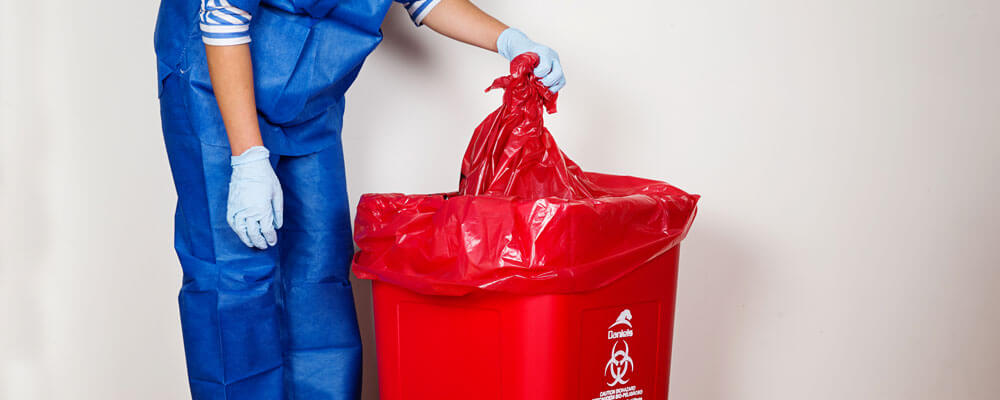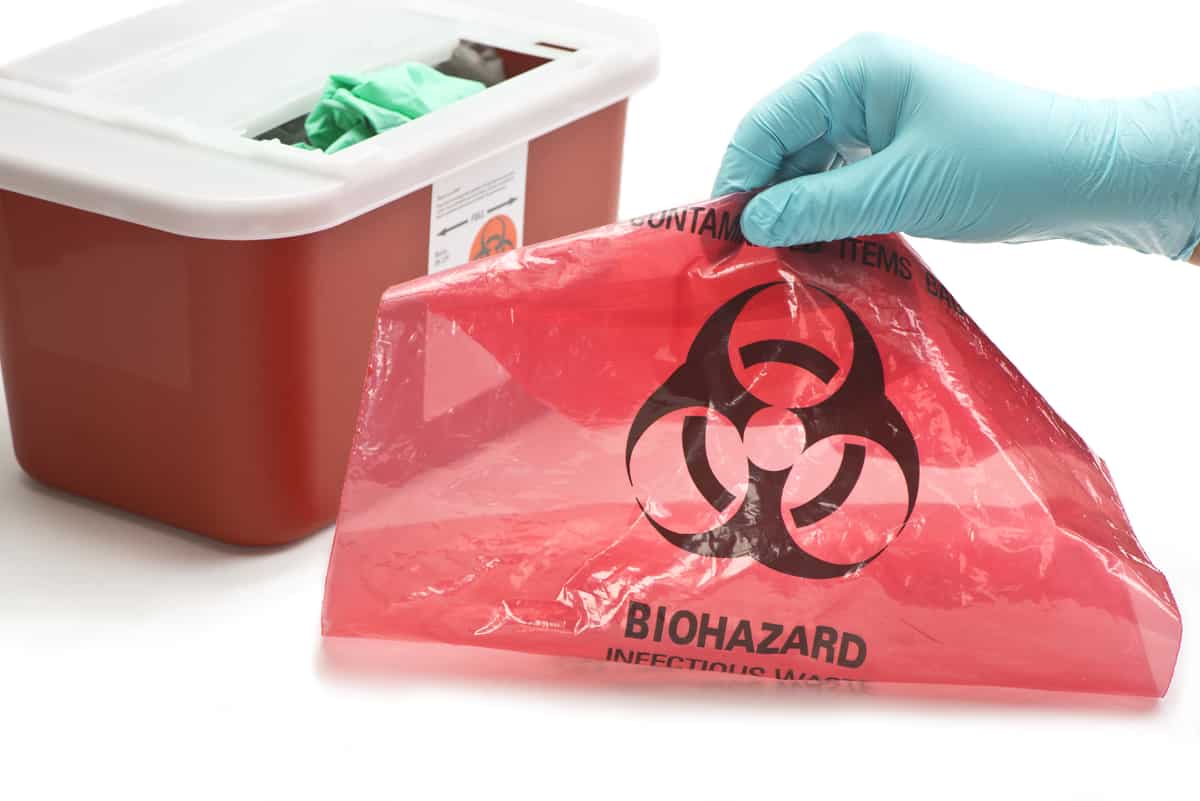Keep Ahead of Regulations: Specialist Guidance on Medical Garbage Disposal
In a world where the health care market is frequently evolving, it is critical for medical facilities to stay ahead of guidelines when it pertains to the correct disposal of clinical waste. With stringent guidelines and regular regulatory modifications, it can be testing to browse the intricacies of this procedure. With expert guidance, centers can make certain conformity and alleviate dangers associated with improper waste disposal. From understanding the different categories of clinical waste to applying the appropriate collection and partition methods, this discussion will give useful understandings and workable ideas to aid centers stay ahead of regulations in the ever-changing landscape of clinical garbage disposal.
Understanding Clinical Waste Categories
Understanding clinical waste classifications is important for correct disposal and management in medical care facilities. Clinical waste refers to any kind of waste generated by medical care tasks that might present a threat to public health and wellness or the environment. It is essential to classify medical waste accurately to ensure its safe handling, transport, disposal, and treatment.
There are numerous classifications of medical waste that medical care centers need to be knowledgeable about. The most typical categories consist of contagious waste, pathological waste, sharps waste, pharmaceutical waste, and chemical waste. Each category has certain standards and policies for its proper management and disposal.
Pathological waste refers to human cells, organs, or body components that call for unique handling and disposal. Pharmaceutical waste comprises run out, unused, or polluted medications that require cautious handling and disposal.
Remaining Up-To-Date With Regulatory Modifications
Remaining current with regulatory modifications is important for healthcare centers to guarantee compliance and appropriate management of medical waste disposal. medical waste removal near me. With policies continuously progressing, it is essential for health care facilities to stay current to prevent penalties, penalties, and potential injury to the atmosphere and public health
To stay in advance of regulatory changes, health care facilities should develop a system for tracking and tracking updates. This can be done by signing up for governing newsletters, going to workshops and meetings, and actively taking part in market organizations. In addition, centers need to designate a personnel or group in charge of remaining educated and distributing info to relevant stakeholders.
Routine communication with regulatory firms is likewise essential. Medical care centers must develop connections with regional, state, and government agencies to guarantee they know any kind of modifications in laws that may impact their waste administration techniques. This can be done through regular conferences, involvement in public remark periods, and aggressive interaction with regulatory companies.
In addition, healthcare facilities should think about partnering with waste monitoring business that concentrate on medical garbage disposal (medical waste disposal services with WasteX). These business are commonly skilled in the most recent policies and can give advice and support to make certain compliance
Applying Appropriate Collection and Segregation Approaches
To properly manage medical garbage disposal, medical care facilities should establish correct collection and segregation methods according to regulatory guidelines. Implementing these methods guarantees the safe handling and disposal of possibly hazardous materials, secures the environment, and minimizes the risk of injuries and infections to healthcare workers and the public.
Appropriate collection and partition approaches entail the usage of assigned containers and classifying systems. Healthcare facilities must give plainly labeled containers for different sorts of clinical waste, such as sharps, infectious waste, pharmaceutical waste, and non-hazardous waste. These containers ought to be color-coded and plainly significant to prevent confusion and advertise simple recognition.
Additionally, healthcare facilities ought to educate their see this site personnel on the right treatments for accumulating and setting apart clinical waste. This includes educating them on the different types of waste, the appropriate containers to utilize, and the value of adhering to regulations and standards. Routine training sessions and refresher course programs ought to be performed to make certain that team member continue to be updated on best techniques.
Furthermore, health care facilities must establish a system for routine collection and disposal of clinical waste. This may involve partnering with certified waste management business that concentrate on clinical waste disposal. These companies will ensure that the accumulated waste is transferred and disposed of in conformity with regulatory needs.
Selecting the Right Disposal Methods

Incineration is just one of one of the most efficient and typical techniques for disposing of specific sorts of medical waste, such as pathological waste and sharps. It involves the regulated burning of waste at high temperatures, minimizing it to ash. However, incineration can release unsafe pollutants right into the air and add to air pollution.

Various other disposal methods consist of chemical treatment, microwave therapy, and landfilling. Chemical therapy involves making use of chemicals to disinfect and reduce the effects of the waste. Microwave therapy uses microwave power to warmth and sanitize the waste. Landfilling entails hiding the waste in an assigned land fill area (medical waste disposal services with WasteX). However, landfilling needs to be the last hope due to the possible risk of contamination to soil and groundwater.
Making Sure Compliance Through Documents and Training
After thoroughly taking into consideration the proper disposal techniques for clinical waste, medical care centers have to make sure conformity with guidelines and lessen ecological effect by carrying out effective documentation and training procedures. This step is crucial in preserving a secure and sustainable atmosphere for both healthcare workers and the basic public.

Training is just as crucial in ensuring compliance with guidelines. Medical care employees who manage medical waste should receive suitable training on waste segregation, managing, and disposal treatments. This training must cover topics such as the appropriate usage of personal safety devices, recognition of different kinds of waste, and the proper disposal methods for each waste category. By providing extensive training, health care centers can empower their personnel to make informed decisions and reduce the risk of inappropriate waste disposal.
Final Thought
To conclude, remaining ahead of regulations in medical garbage disposal is critical for medical care centers. medical waste removal. Comprehending the different classifications of clinical waste, staying upgraded with regulatory modifications, carrying out appropriate collection and segregation techniques, selecting the proper disposal techniques, and making certain conformity through documents and training are all essential steps. By adhering to these standards, health care organizations can efficiently dispose and manage of clinical waste in a risk-free and liable manner
From comprehending the different classifications of clinical waste to implementing the best collection and partition techniques, this discussion will certainly offer important insights and actionable pointers to assist facilities remain ahead of policies in the ever-changing landscape of clinical waste disposal. - medical waste disposal services with WasteX
The most usual classifications consist of infectious waste, pathological waste, sharps waste, pharmaceutical waste, and chemical waste. Health care centers ought to give plainly labeled containers for various kinds of clinical waste, such as sharps, contagious waste, pharmaceutical waste, and non-hazardous waste. Health care centers must establish a comprehensive system to record and track all facets of medical waste disposal, consisting of kinds of waste generated, quantities, and disposal approaches used. Healthcare employees that deal with clinical waste should receive ideal training on waste partition, dealing with, and disposal treatments.